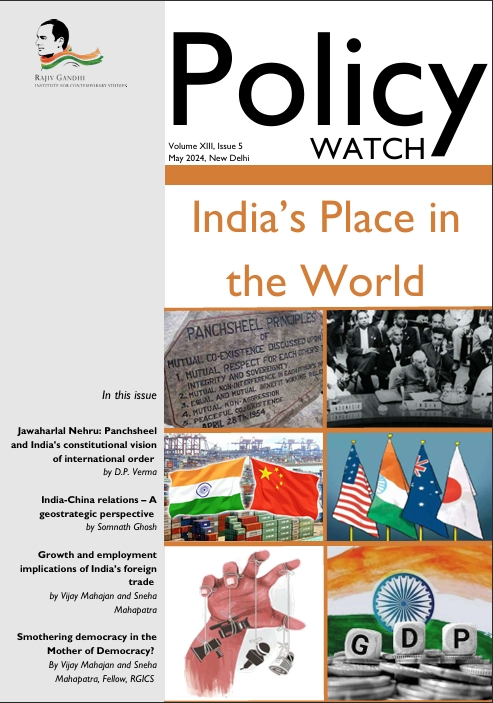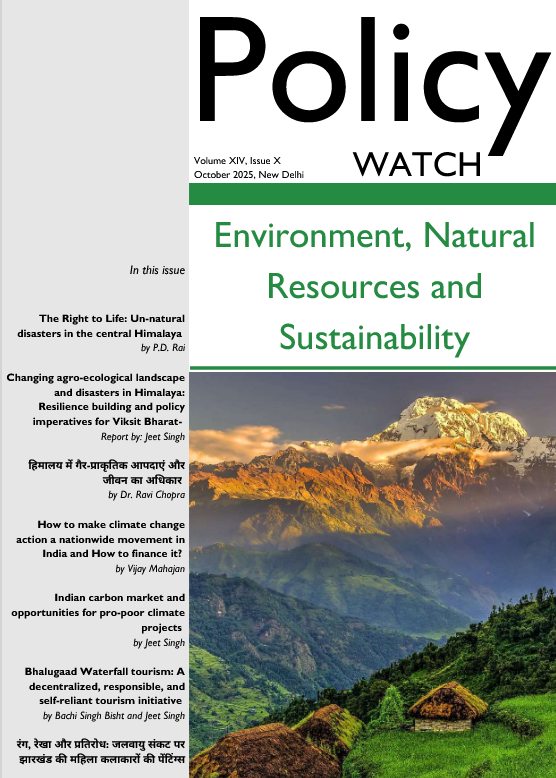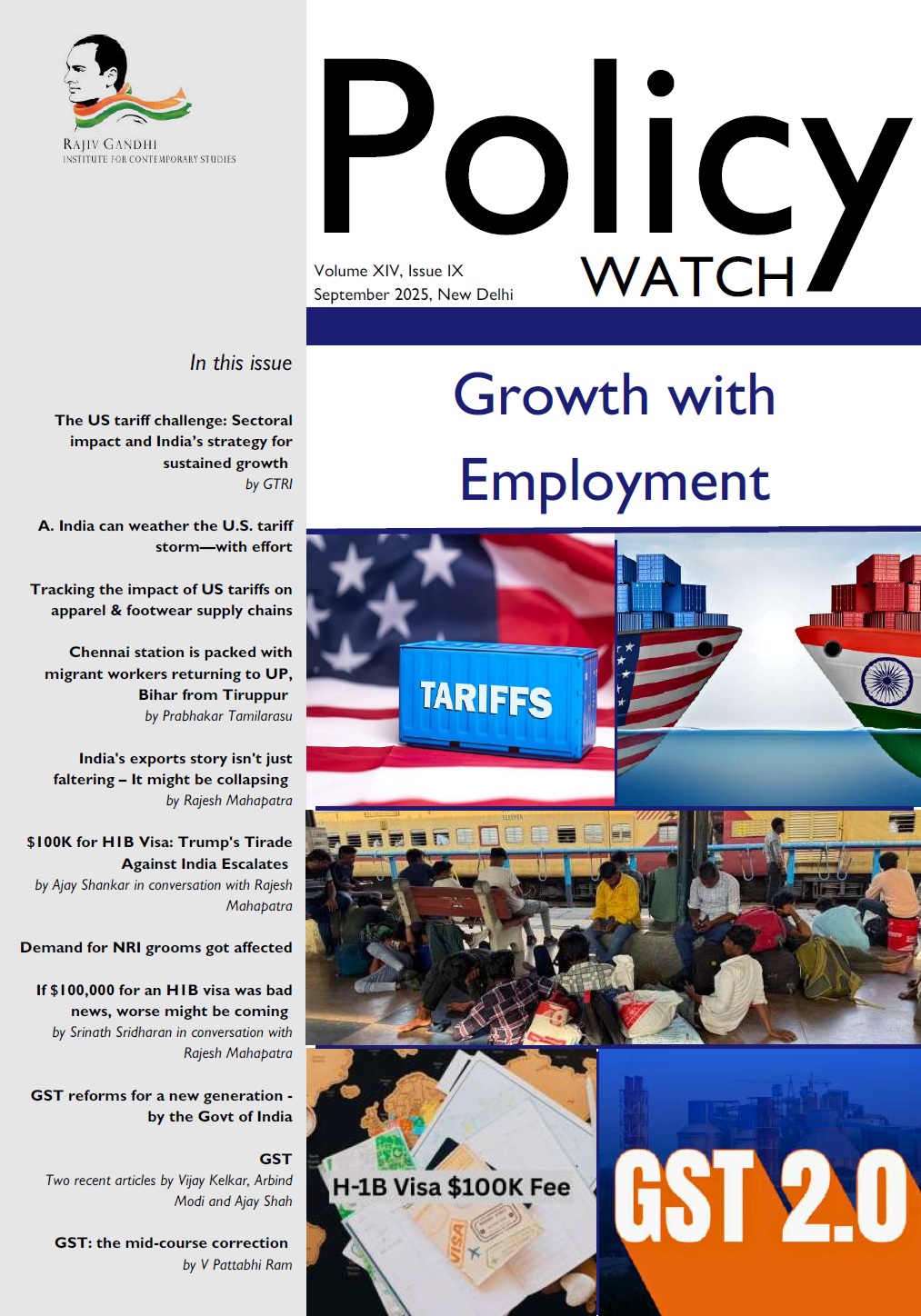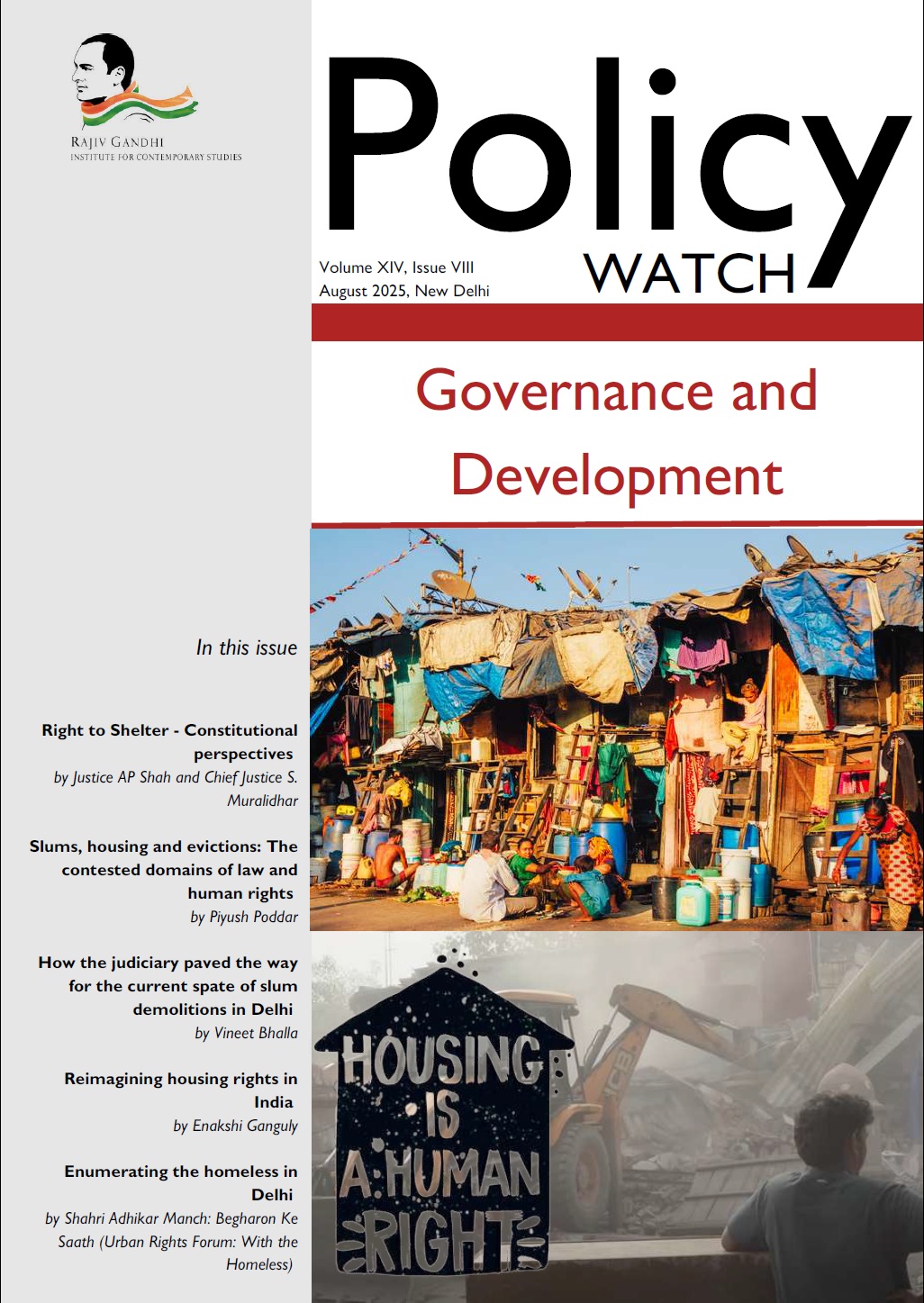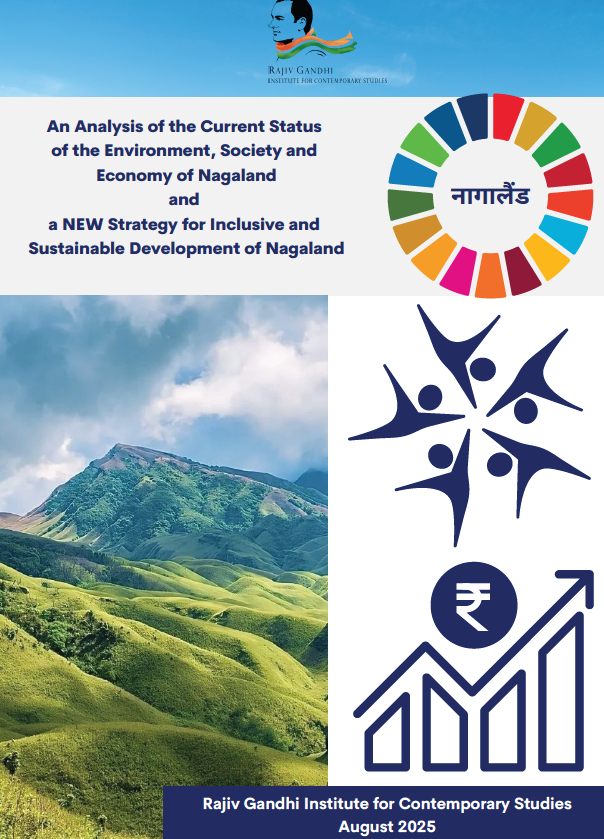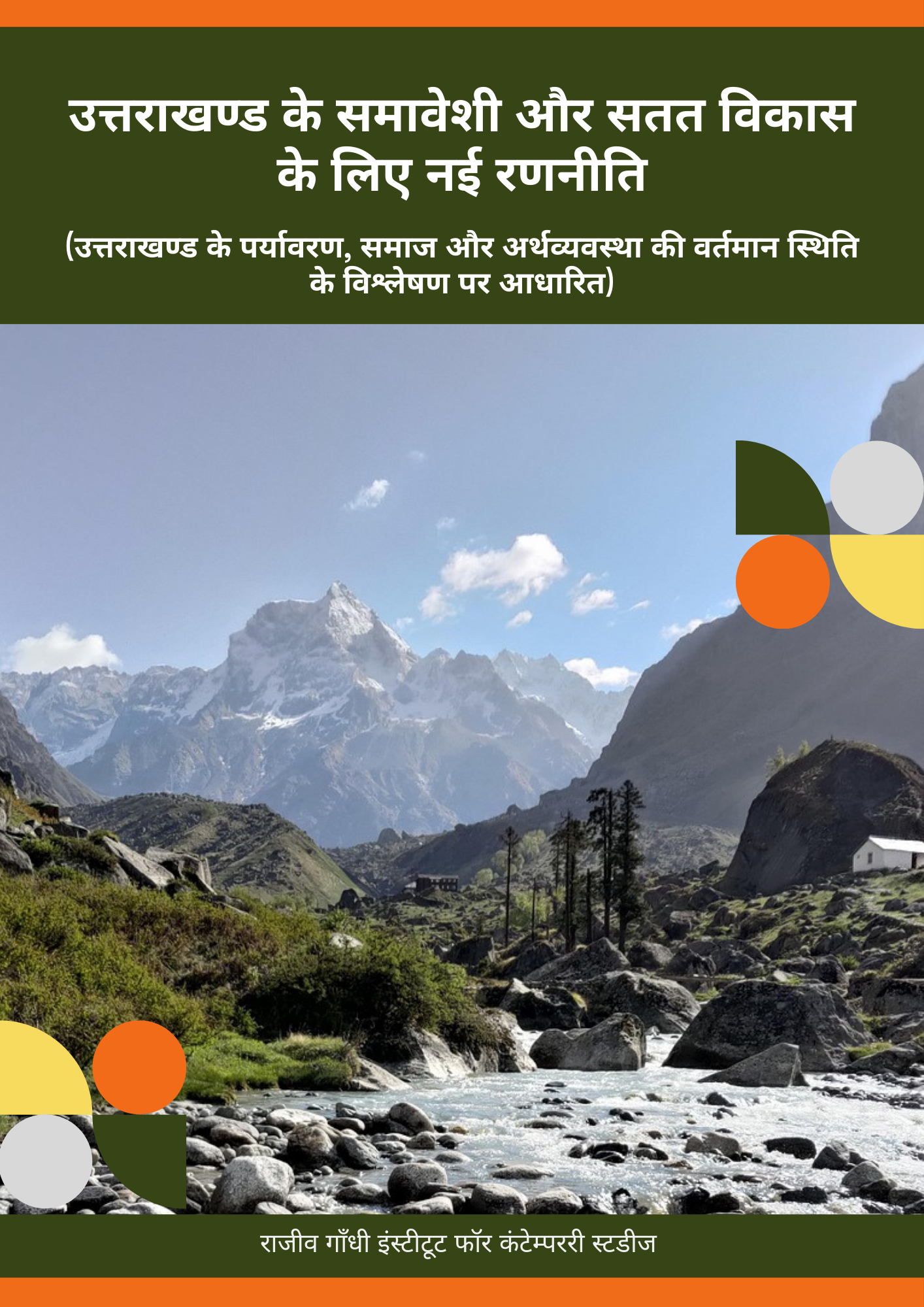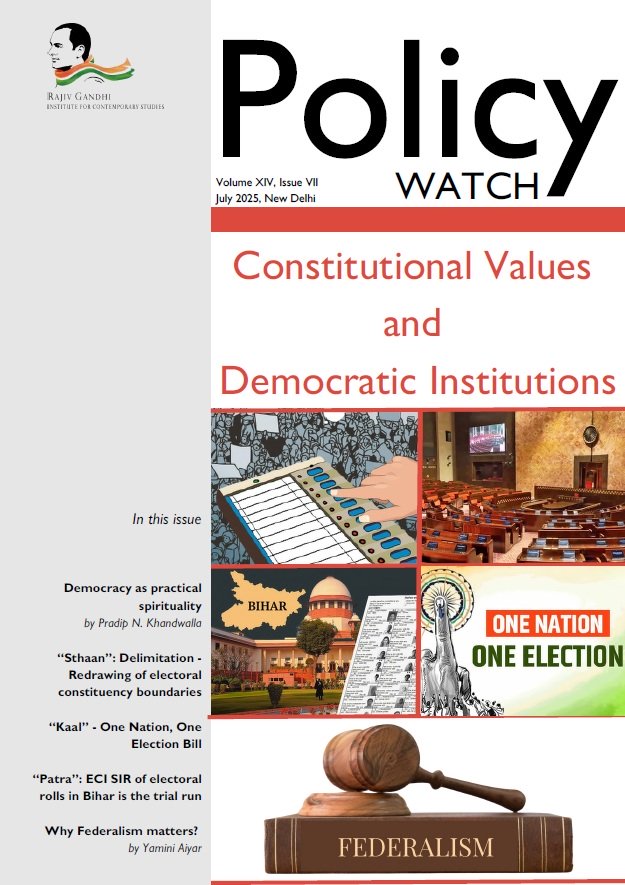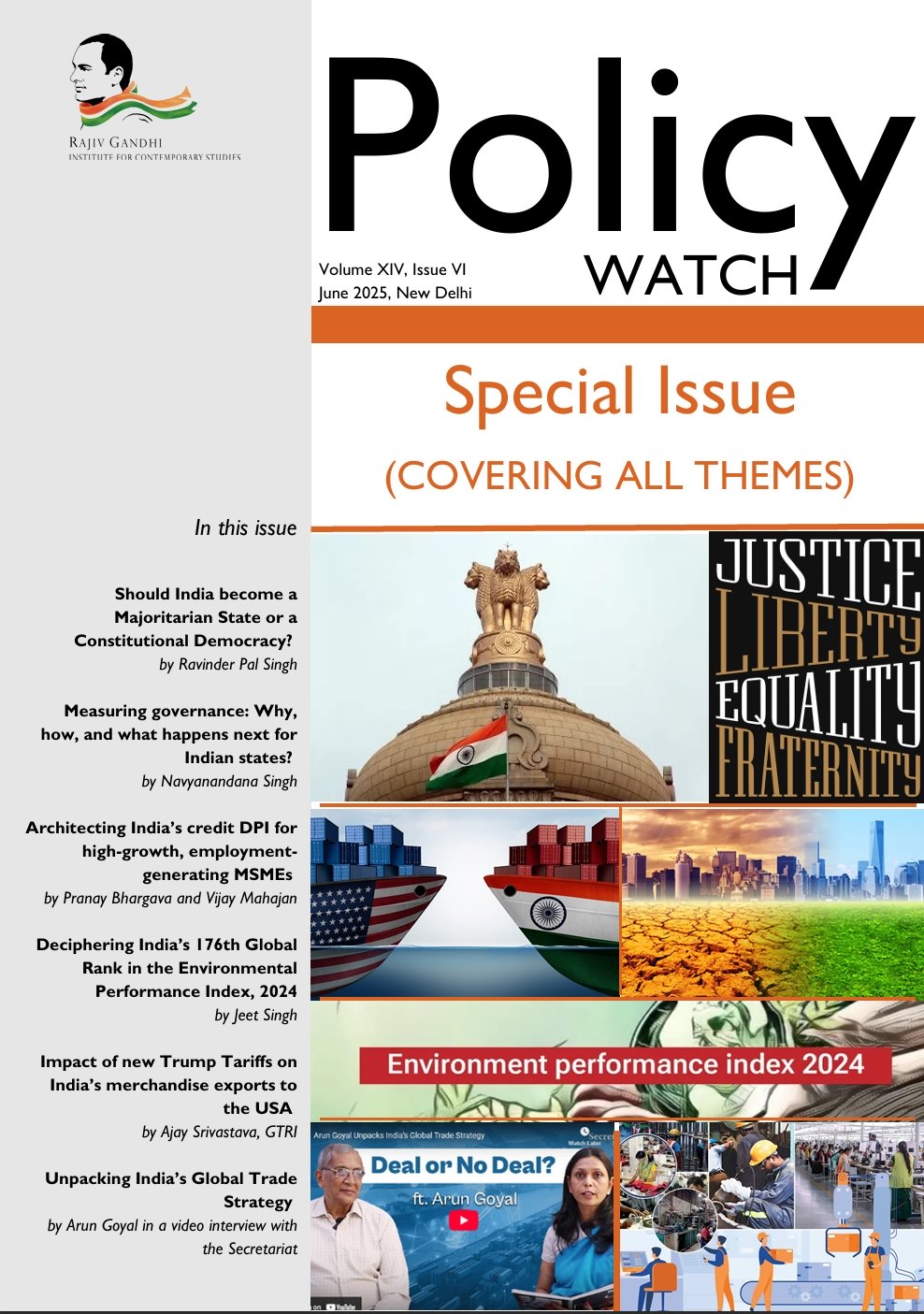This issue has been put together by RGICS Senior Visiting Fellow, Prof Somnath Ghosh, who did his doctoral work at the Jawaharlal Nehru University’s School of International Studies and RGICS Fellow Sneha Mahapatra, who has a post-graduate degree from the School of Advanced International Studies, Johns Hopkins University, USA.
This month, on 27th May, it will be India’s first Prime Minister Pandit Jawaharlal Nehru’s 60th death anniversary. He was not just one of the main leaders of India’s freedom movement, but also a major contributor to the ideas enshrined in India’s Constitution as also the chief architect of India’s foreign policy.
When India became independent, the Cold War had just started, with the US and the USSR trying to expand their influence globally. One of Nehruji’s contributions was the idea of non-alignment with either bloc. Along with this, Nehruji tried to establish an atmosphere of peace and harmony among the newly independent countries, starting with Asia. It was in the context that he became a major proponent of the concept of Panchsheel. So we begin this issue of Policy Watch with a reprint of a 1989 article by Prof DP Verma titled Jawaharlal Nehru: Panchsheel and India’s Constitutional Vision of International Order.
The article begins with a survey of the Constituent Assembly debates among the framers of the Indian Constitution and describes how Nehru’s ideas influenced the drafting of articles relating to India’s international relations. The article then describes the concept of Panchsheel that was seen as a major Asian contribution to development of International relations. Nehru’s Panchsheel message reflected India’s constitutional vision of world order, and the article asserts that the doctrine has, at least, at the normative level, strengthened international peace.
The next article, by Prof Somnath Ghosh, moves from Nehruvian idealism to contemporary realism. It is on the relations between India and China during the last five years, taking a geostrategic approach. In the article he traces the major events in the respective bilateral relations between India and China which went from cozy “Jhula” diplomacy to border skirmishes in both the western and eastern borders with China. The article draws attention to the fact that though the relations with China have deteriorated over the last five years, India’s imports from China have shown no decline but continue to grow to the point where China is now India’s number one trade partner.
The third article, by Vijay Mahajan and Sneha Mahapatra, is titled Growth and Employment Implications of India’s Foreign Trade. It is a summary of a much more detailed research paper by the authors. It shows that foreign trade has significant effect on both GDP growth as well as employment. In FY 2021-22 foreign trade accounted for about 45.7 percent of the GDP of which exports were 21.5 percent and imports were 24.2 percent of the GDP.
As per an ICRIER study, growth in exports by 10 percent leads to an increase in the GDP growth rate by as much as 1.3 percent per annum and every million dollars of exports generated 80 jobs, although the number has been declining due to increasing capital intensity of exports. Interestingly, imports do not have an opposite effect – that is decline in growth and employment. This is because exports have increasing levels of import content. Thus the key to both growth and employment is growth in the overall ratio of foreign trade to the GDP. Of course, if exports can focus on employment intensive sub-sectors, it will have a more beneficial effect on employment. The article identifies a number of sub-sectors which are labour intensive and in which India has a strong revealed comparative advantage, to meet the growth with employment objective.
The fourth article has been specially written keeping in mind the contemporary situation – we are in the midst of a very contentious general election. Titled “Smothering Democracy in ‘the Mother of Democracy’?” it is also the joint work of Vijay Mahajan and Sneha Mahapatra. The article delves into various actions taken by the current government which amount to smothering democracy, and the impact it has had on India’s image as a democracy where the rule of law prevails.
The article asserts that merely using rhetorical statements to declare India as “the mother of democracy” as was done during the G-20 summit, will not cut ice. If India has to protect its image as a democracy, it has to show up in the government’s actions in protecting individual liberties, human rights, the rule of law and ensuring reasonably equitable opportunities for economic growth for all its citizens including the minorities and the poor.
Policy Watch: India’s Place in the World – May 2024
Send download link to:

